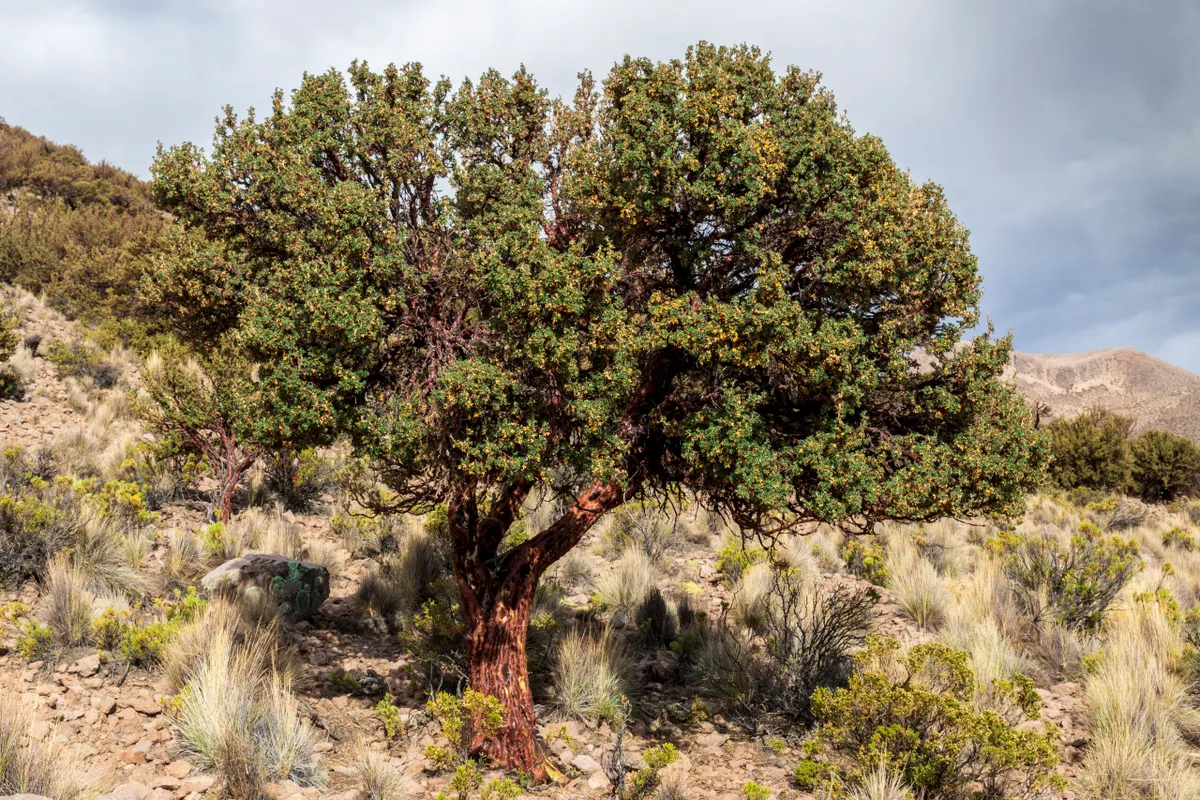Are you tired of growing the same old fuchsias, dahlias and Michaelmas daisies? Do you want to grow something different? Something your neighbours aren’t growing? Something most of your neighbours have never even heard of?
You may also like
- How not to lose nature from your garden
- Digging is the garden job you don't need to do anymore
- How intelligent are your plants? You might be surprised
- Simple compost without the faff
Faced with a warming climate, the natural answer to that question might seem to be something warmth-loving, perhaps only on the edge of hardiness right now. And in fact, if you’re planting a tree, in other words something you hope will still be around in 50 years, maybe that’s what you should be thinking of, since many of our native trees are going to struggle in a future climate. For example, if you’re really feeling lucky, you could be the first person in your street to try growing Metrosideros excelsa, the New Zealand Christmas Tree or pohutukawa.
But here’s a completely different suggestion, and one that doesn’t present any climatic challenges at all: three trees that are perhaps nothing very special in themselves, but make a geographically unique collection: the world’s highest tree, the world’s most northerly tree, and the world’s most southerly tree.
The world's highest tree
Polylepis tarapacana from the Andes

Somehow, if asked about the world’s highest tree, my thoughts turn naturally to the Himalayas, but in fact the true record holder lives a long, long way from there, in the Andes. Polylepis tarapacana (no common name in English) is a small evergreen tree or shrub that reaches about 6 m in height. The highest individuals that could reasonably be described as ‘trees’, which are about 3 m tall, are found at an altitude of 4810 m, but shrubby plants are found up to 5100 m on the slopes of the volcano Nevado Sajama in Bolivia.
You could be the first person in your street to try growing Metrosideros excelsa
Polylepis is in the Rosaceae, but if you were hoping for some pretty flowers, you will be disappointed. Despite being a tree, its closest relatives are herbaceous species like salad burnet and Acaena – not plants noted for showy flowers. On the other hand, I think most gardeners would consider its flaking red bark and furry stems and leaves to be attractive, in an understated sort of way.
Two tough trees: the world's northernmost and southernmost trees
Larix gmelinii and Nothofagus betuloides

The first thing that strikes you about the world’s northernmost and southernmost trees is how different they are: the former is a deciduous conifer, while the latter is a broadleaved evergreen. This reflects some fairly extreme environmental differences; the Taimyr Peninsula in Russia, home of the Dahurian larch (Larix gmelinii), has a continental climate with long, cold winters (mean January temperature -32 °C) and short, cool summers (mean July temperature just 13 °C). In a climate like that, being evergreen isn’t really an option; you need to totally shut down in the winter.
For a tree, the chief hazard is that this is one of the stormiest places on earth

The world’s southernmost tree (Magellan’s beech, Nothofagus betuloides), on the other hand, has to put up with some very different problems. It grows on Isla Hornos, the southernmost island in the Cape Horn archipelago at the very tip of South America. Here the climate is extremely oceanic and relatively mild (certainly compared to the home of Dahurian larch in Siberia), with the minimum air temperature only occasionally falling below freezing. For a tree, the chief hazard is that this is one of the stormiest places on earth, with winds often exceeding 200 km per hour.
The most exposed trees survive simply by growing sideways rather than vertically
The effects of such extreme windiness are obvious. Under good conditions, Magellan’s beech can make a handsome tree up to 25 m tall, and even on Isla Hornos they achieve 5 m in sheltered places. But the most exposed trees, at the actual southern limit, survive simply by growing sideways rather than vertically.
But can you buy them in the UK?
But now the really big question: if you fancy growing these three, are they actually in cultivation? Two of them certainly are; the RHS plant finder lists a few suppliers of both Magellan’s beech and various subspecies of Dahurian larch. But if you want to grow Polylepis tarapacana, then you have a problem, despite it being the most garden-worthy of the three, certainly for a small garden. My advice would be to grow the equally attractive Polylepis australis, which certainly is in cultivation. Trust me, no-one will know the difference.